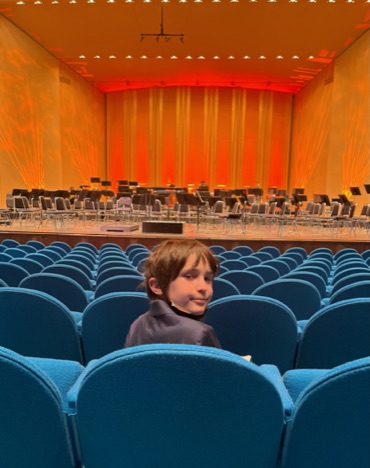 |
| Family, looking back on 2022 |
Last year's Family Xmas Letter was authored by several of the humans who together make up this Family. This year, in the spirit of inspiration and laziness, we tried replacing ourselves with a non-human/non-canine author, the state of the art ChatGPT, current darling in Artificial Intelligence circles. "Write the Family Xmas Letter in the style of brekkieusa.blogspot.com" we commanded this genie, to which it replied:
Yeah, try again, robot! This might be any other family's Xmas letter (in particular, some family that has gotten around to naming its new baby but not themselves) but it is surely not ours. No, ours goes more like...
QUBIT:
 |
| Schnog shot |
Banned from Peebook for sh!tposting, Qubit decided to go halvsies with Elon Musk to buy Twitter. Though delighted to have yet more space where she can express her opeenions freely, she was disappointed when her business partner refused to rename it--yes, you guessed it!--Quitter. Unfortunately, while no one knows you're a dog on the Internet, it is pretty obvious if a dog is running it. Undaunted by her disastrous foray into social media ownership, Qubit launched several other ventures this year including TakeMeForAWalkX, The Boring Day Because Nobody Walked Me Company, Neuroticlink, and Tesla.
TALIA:
 |
| Testing station |
Did you know you can get COVID tests in bulk? Did you know you can do it repeatedly, and that no matter how often you test after that you will never use them all up? Did you know that's why we have a barn, which is not only handy for storing COVID tests but also for storing COVID people? Did you know that it is actually nicer to live in the barn than it is to live in our house (see section on home rebuild, below)? Well Talia knows all this because she moved to the barn to be with her tests in early December and has scarcely been seen since. Perhaps due to decreased time spent with family-left-behind-in-house Talia is enjoying much success at work and has achieved her life goal of ignoring the mess in her closet.
FELIX:
 |
| Felix, attempting to escape from family |
EL GID:
 |
| First-mover advantage |
The thing about our second child is that he's the first. The first person to school every day, the first person up on the weekend looking for the TV remote, and, not least, the first person to ever open a golf course in Landers, CA. It's these kind of weird details that keep you readers coming back! And Gid's all about weird details. Why, this year alone he invented the fried-chicken-and-fried-fish sandwich, was complimented on his outfit by David Sedaris, and took possession of the biggest lava lamp you've ever seen. Details, details, the essence remains the same: teen trumpeter talks too much while wearing Walkman.
ALEC:
 |
| Hey, look at me! |
"What shall I write about me?" the author asked his obnoxious assistant, to which the latter replied, "Very little." Fine, I'll keep it short: new stereo repair man, new sweater, new DVD release, new scars and broken bones (three separate incidents, sigh), new job as data whisperer, new willingness to drive Gid to school...NOT.
THE HOUSE:
 |
| Drilling 50' hole in our lawn as totally normal part of house rebuild process |
Inspired by a misbegotten faith in our project management skills the collective You keep asking, "How's it going with the home renovation?" The honest answer is that it is going backwards. To build here in Fairfax one creates a design, finds a builder, jumps through a labyrinth of bureaucratic hoops, and conjures up, say, a million dollars, all of which we have done, more or less. However, to build in Fairfax next to a creek is much harder. Indeed, it may prove impossible, which is the question before us at the time of writing. We hope--and fear--there will be lots more news about this in the 2023 Family Xmas Letter...and will take no further questions until that time.
THE VACATIONS:
This year's vacations produced the best crop of photos ever (because mobile phone cameras keep improving). Here, the best of the best, all 100% unedited (because none of us know how to use filters):
To quote our AI assistant, "We hope that you have [sic] a wonderful Christmas and that the new year brings you health, happiness, and lots of love. With love, (Your name)."

